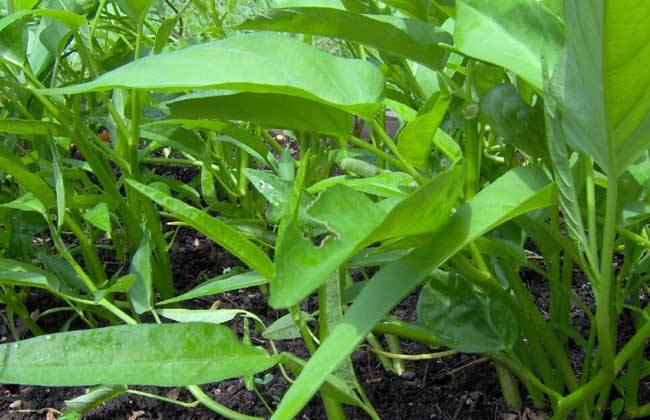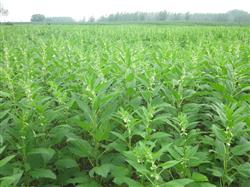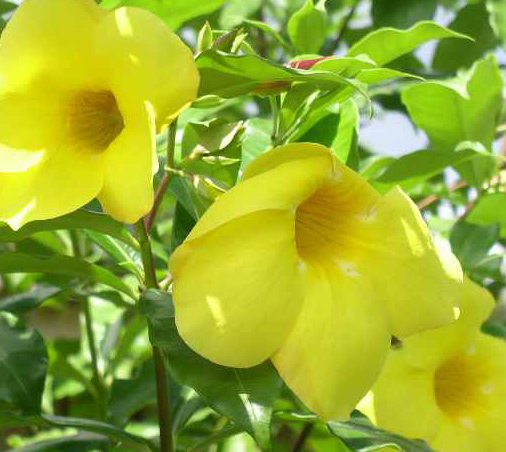stem base Learn more about stem base
-
The latest causes and control methods of swelling of stem base of asparagus

Asparagus is a common leafy vegetable, we often use it to stir-fry or cold salad, it is also a widely planted market, many growers often have swelling at the base of the stem when planting, which seriously affects the quality of a large number of asparagus. So the stem of asparagus
2020-11-10 The latest hollow cabbage stem base swelling causes prevention and treatment methods -
Causes and control methods of swelling of stem base of asparagus

Causes and control methods of swelling of stem base of asparagus
2019-07-29 -
Identification of common confounding symptoms in rice

1. Several kinds of Ralstonia solanacearum 1. Sclerotinia sclerotiorum. It is more common in the late stage of late rice, which often occurs in clumps in the field, and there are several plants in a hole. The tissue at the base of rice is soft rotten and has dark brown spots. Peeling off the basal leaf sheath and stem, we can see that there are many black sclerotia smaller than amaranth seeds. 2. Bacterial base rot and wilt. Sporadic occurrence in the field, generally 1 in 1 point, 3 plants fell ill, the base of the diseased plant showed rat gray rot, the root system was rare and decayed, peeled off the basal stem, full of smelly water, sterile sclerotia. 3. Physiologically withered. The stem of rice plant shrinks and the base of rice stem is pinched by hand.
2019-01-16 -
Schisandra chinensis stem base rot

The stem base rot of Schisandra chinensis can cause the base of the stem to rot, the root bark to fall off, and finally the whole plant to die. With the expansion of artificial cultivation area, the incidence of stem base rot showed an upward trend. The general incidence rate is 2%-40%, and the serious one is more than 70%. It is a devastating disease. 1. The symptom of stem rot occurred in Schisandra chinensis in all years, and it was serious in 1 ~ 3 years old. The disease begins at the base of the stem or at the junction of the rhizome. At the initial stage of the disease, the leaves wilt and droop like a lack of water, but can not recover.
2019-01-16 -
How does passion fruit stem rot do? How to prevent and cure?

Passion fruit is a perennial evergreen vine, but after industrial cultivation, the planting cycle in most areas is only 2-3 years or even one year, such as Guigang, Guangxi. The main culprit for this reason is the root rot of passion fruit. So how about passion fruit stem rot?
2020-11-09 Passion fruit stem base rot disease how to do how to prevent and control passion -
Effect of nodule number of seed stem on the yield, growth and development of Polygonatum polygonatum

Effect of Node number of seed Stem on the yield, growth and Development of Polygonatum polygonatum in production, Polygonatum polygonatum is often propagated by rhizome, which is often called "seed stem" because its rhizome is beaded or nodular. The quality of seed stem directly affects seedling emergence and growth.
2018-06-04 -
How to cultivate hybrid pennisetum

Pennisetum (scientific name: Pennisetum alopecuroides (L.) Spreng) perennial. The fibrous root is stout. Culms erect, tufted, densely pilose under inflorescence. Leaf sheath smooth, flattened on both sides, main veins ridged, spanning at the base, longer than internodes at the upper part of the culm; ligule with
2020-11-08 Hybrid wolftail grass how cultivation scientific name -
Stem rot of Fugui bamboo

Symptom rich bamboo stem rot will cause plant death and reduce the ornamental value. Mainly from May to September, the weather is muggy, the base of the stem becomes yellow and soft, the interior of the stem will gradually turn red, and the plant will rot from bottom to top. Before planting the control methods, the excellent varieties with certain disease resistance should be selected. Pay attention to water control in peacetime
2018-10-22 -
Tree structure and shaping method of two branches and one stem in apple dwarfing and dense planting

Apple dwarfing dense planting two branches and one stem tree structure and shaping method 1 Apple dwarfing cultivation two branches and one stem structure 80cm above ground height 120 cm, cultivate two main branches extending between rows, the horizontal angle between the two main branches is 180 °.
2018-05-29 -
What diseases should be prevented from planting white sesame?

What diseases should be prevented from planting white sesame? Please introduce the following diseases to be prevented in planting white sesame: first, the occurrence characteristics of main diseases. The main diseases of sesame are sesame stem blight, sesame wilt, sesame bacterial wilt, sesame blight and so on. 1. Stem blight of sesame. Sesame stem blight, also known as sesame stem blight, sesame black root.
2018-07-19 -
Occurrence and control techniques of sesame diseases

Occurrence and control techniques of sesame diseases
2018-07-25 -
What kinds of yellow cicadas are there?

Yellow cicada belongs to the genus Apocynaceae. There are 15 species of this genus, which are distributed in tropical America. The common species and cultivated species introduced into China are yellow cicada, soft branch yellow cicada, double soft branch yellow cicada, small leaf soft branch yellow cicada, white cicada, purple cicada. Yellow cicada is evergreen shrub, leaves 3-5 verticillate, ovate-lanceolate, entire.
2019-01-06 -
Prevention and Control of White Silk Disease of Cymbidium

White silk disease is caused by fungus Selerotiumrolfsii, which harms seedlings to the base and roots of adult stems. Cymbidium is more likely to be infected with the disease. During the disease, white hyphae can be seen at the base of the stem, browning at the base of the stem, root drying, and the formation of a large number of small brown sclerotia, resulting in the softening of the stem base and death. The pathogen has a wide host range and does serious harm to bulbous flowers and perennial flowers. And it has strong saprophytic nature and can survive in the matrix or old basin for a long time by sclerotia. This pathogen can also be infected with cymbidium.
2019-01-16 -
Stem rot is easy to cause peanut rot how to control peanut stem rot

Stem rot is easy to cause peanut rot how to control peanut stem rot
2018-07-14 -
Standardized cultivation techniques of asparagus

Water spinach, formerly known as Ipomoea aquatica, also known as rattan vegetable, Chinese cabbage, macaroni, arenaria, urn vegetable, empty cauliflower, bamboo leaf vegetable, festival vegetable. The stem center of the white trumpet-shaped flower is empty, so it is called hollow vegetable. It is widely cultivated as vegetables in rural areas of southern China. The shape of asparagus
2020-11-08 Asparagus of standardization cultivation techniques spinach original name -
Occurrence characteristics and control measures of sesame blight

Sesame blight is a destructive disease. Mainly damage the base of sesame stem, stem, capsule, leaf. After the damage to the base of the stem, it first showed dark green water stains, and then showed reddish brown, depression and longitudinal split of the cortex. After the damage to the stem and capsule, the diseased part showed a dark green water stain.
2020-11-08 Species sesame blight occurrence characteristics prevention and control measures -
Harmful symptoms and Control methods of Peanut Stem Rot

Peanut stem rot, commonly known as rotten neck disease, is distributed in all peanut producing areas throughout the country. It generally occurs in the middle and later stages. It wilts and dies soon after being infected. Pods often rot or seeds are dissatisfied, resulting in serious losses. The general field incidence rate is 20% to 30%. In severe cases, it reaches 60% to 70%.
2018-09-06 -
Common diseases and control methods of lily

1. Symptoms of bulb and scale rot and stem disease caused by Fusarium: plants with rotten bulbs and scales grow very slowly and their leaves are light green. Underground, brown spots appear at the top of the scales, the sides or where the scales connect with the base plate, these spots gradually begin to rot, and if the base plate stem is infected, then the whole scale ball will rot. The disease in stem and leaf caused by Fusarium is a disease infecting the aboveground part. The distinguishing mark is that the basal leaves turn yellow in adolescence, and the yellowed leaves turn brown and fall off. On the stem
2019-01-16 -
Confused spot blight, stem withered, green withered, withered. What does it have to do with all kinds of withering?

Spot blight, leaf blight, stem blight, vine blight, standing blight, green blight, wilt. Seeing so many "blight" diseases, do you feel that your brain has been confused? Moreover, many diseases are similar to each other in terms of symptoms. For example.
2018-05-24 -
An Introduction to the Characteristics of Crassulaceae

I believe that many flower friends have raised too much meat, and the lineup of meat is very strong, among which the most famous is Jing Tianke. Crassulaceae plants are distributed in most parts of the Northern Hemisphere. There are about 35 genera and more than 1500 species. There are about 240 species in 10 genera in China. Crassulaceae plant
2020-11-27 Sedum family plant characteristics introduction believe many flower friend
